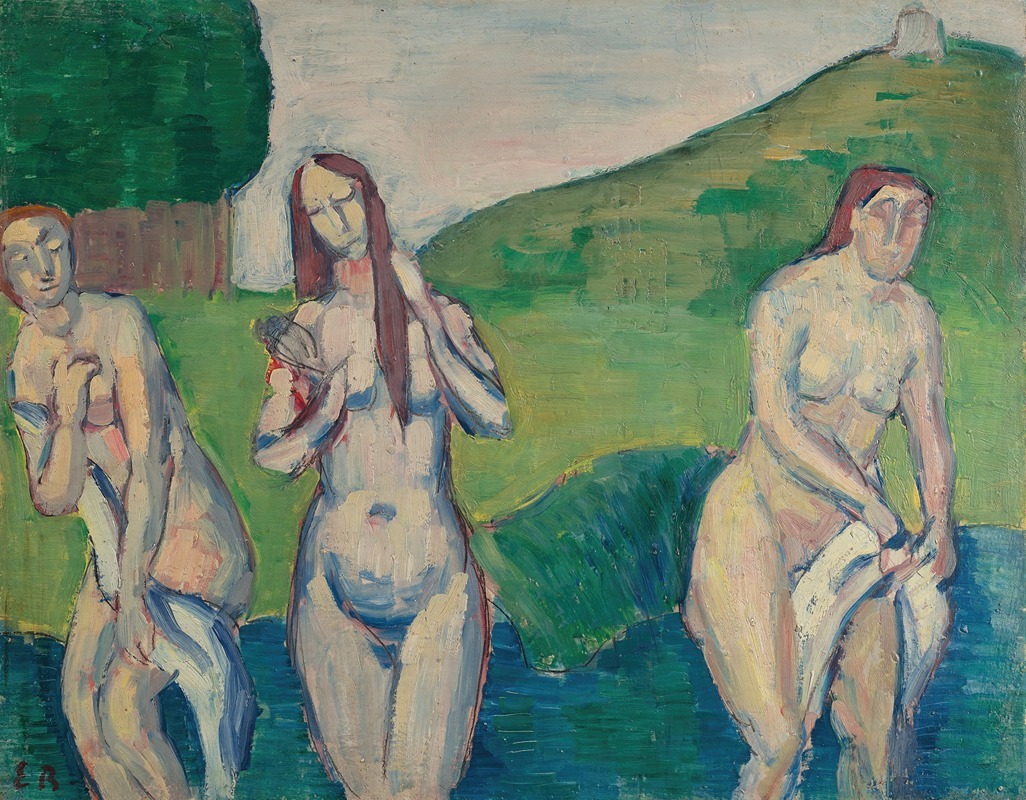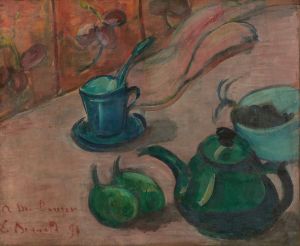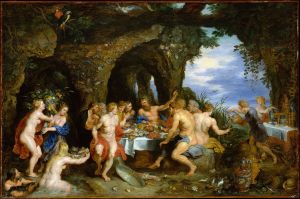
Baigneuses
A hand-painted replica of Emile Bernard’s masterpiece Baigneuses, meticulously crafted by professional artists to capture the true essence of the original. Each piece is created with museum-quality canvas and rare mineral pigments, carefully painted by experienced artists with delicate brushstrokes and rich, layered colors to perfectly recreate the texture of the original artwork. Unlike machine-printed reproductions, this hand-painted version brings the painting to life, infused with the artist’s emotions and skill in every stroke. Whether for personal collection or home decoration, it instantly elevates the artistic atmosphere of any space.
"Baigneuses" is a painting by the French artist Émile Bernard, created in 1894. Émile Bernard was an influential figure in the Post-Impressionist movement and played a significant role in the development of modern art in the late 19th and early 20th centuries. He is known for his innovative use of color and form, as well as his contributions to the Symbolist and Cloisonnism movements.
The painting "Baigneuses," which translates to "Bathers" in English, is a notable example of Bernard's work during this period. It depicts a group of women bathing, a common theme in art history that has been explored by many artists. Bernard's interpretation of this subject is characterized by his distinctive style, which combines elements of Symbolism and Cloisonnism.
Cloisonnism, a term derived from the French word "cloisonné," refers to a style of painting that uses bold outlines and flat areas of color, reminiscent of stained glass or enamel work. Bernard, along with artists like Paul Gauguin and Louis Anquetin, was instrumental in developing this technique. In "Baigneuses," Bernard employs this method to create a composition that is both decorative and expressive. The figures are outlined in dark contours, and the colors are applied in broad, flat areas, emphasizing the two-dimensionality of the canvas.
The painting reflects Bernard's interest in the simplification of forms and the use of color to convey emotion and meaning. The choice of colors in "Baigneuses" is particularly striking, with a palette that includes earthy tones and vibrant hues. This use of color is not merely decorative but serves to enhance the overall mood and atmosphere of the scene.
"Baigneuses" also demonstrates Bernard's engagement with Symbolist ideas, which sought to express the deeper, often spiritual, aspects of human experience through art. The serene and harmonious depiction of the bathers can be seen as an exploration of themes such as purity, nature, and the idyllic aspects of rural life. This aligns with the Symbolist movement's focus on the inner world and the use of symbolic imagery to convey complex ideas and emotions.
Émile Bernard's work, including "Baigneuses," had a significant impact on his contemporaries and the subsequent generation of artists. His collaboration and friendship with Paul Gauguin, in particular, were influential in the development of Synthetism, a style that sought to synthesize form and color to create a more profound artistic expression. Bernard's contributions to these movements helped pave the way for the emergence of modern art in the 20th century.
Today, "Baigneuses" is recognized as an important work within Bernard's oeuvre and is appreciated for its innovative approach to form and color. It serves as a testament to Bernard's artistic vision and his role in the evolution of modern art. The painting is held in various collections and continues to be studied and admired by art historians and enthusiasts alike.


















